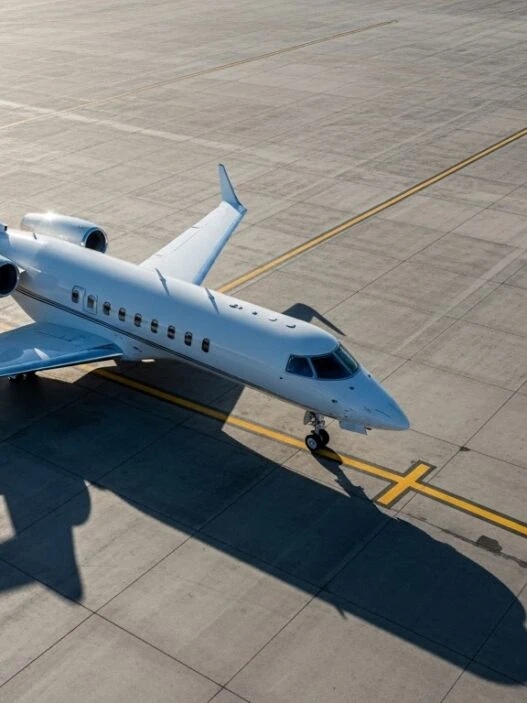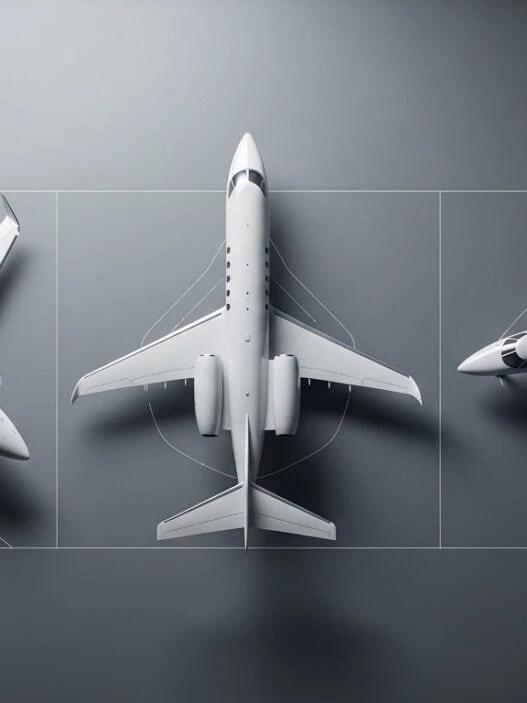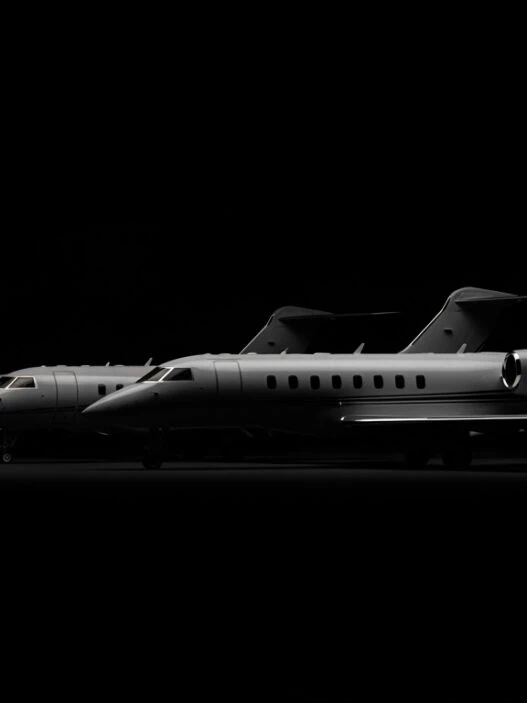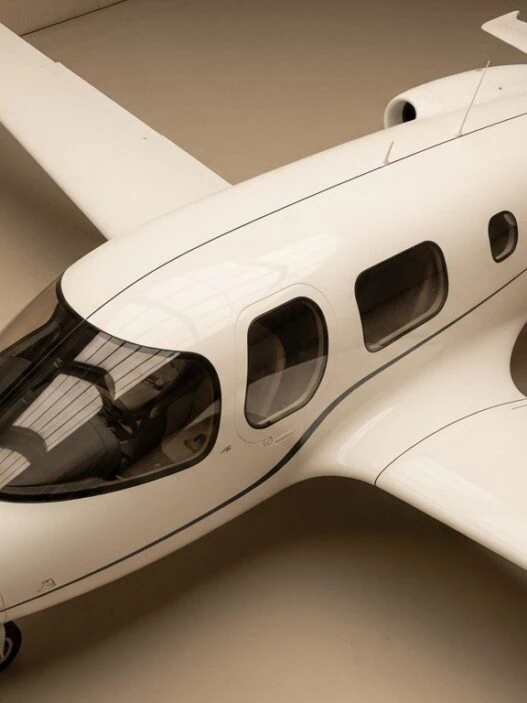Update – [September 17, 2025]
This article has been substantially revised to incorporate expert feedback and expanded with two new chapters (Regulatory and Certification Challenges and Strategic Pathways for eVTOLs), as well as an updated conclusion that integrates both financial and strategic perspectives.
The eVTOL vs. helicopter cost comparison has become critical for operators, investors, and aviation professionals as electric vertical takeoff and landing aircraft – including both eVTOLs and electric helicopters (eHelicopters) – prepare for commercial deployment. With traditional helicopters dominating short-range aviation for decades, the emergence of electric aircraft technology promises to revolutionize both operational economics and environmental impact in urban air mobility.
This comprehensive analysis examines acquisition costs, operational expenses, maintenance requirements, and total cost of ownership between conventional helicopters and emerging electric aircraft, including both eVTOLs and eHelicopters. As the aviation industry approaches a transformative period, understanding these cost dynamics becomes essential for making informed investment and operational decisions.
Current market data reveals significant cost differences that could reshape commercial aviation strategies. While helicopters benefit from mature technology and established supply chains, electric aircraft manufacturers promise dramatically lower operating costs through electric propulsion and simplified mechanical systems.
But is this promise realistic?
This analysis initially presented an optimistic outlook based on manufacturer projections. However, critical feedback from aviation experts has revealed significant flaws in these early assumptions. While we maintain the original introduction for context, the following pages present a substantially revised analysis that incorporates current market realities and addresses the valid concerns raised by industry professionals.
Deep Dive: For comprehensive rankings of all eVTOL manufacturers, see our eVTOL Manufacturers Ranking 2025.
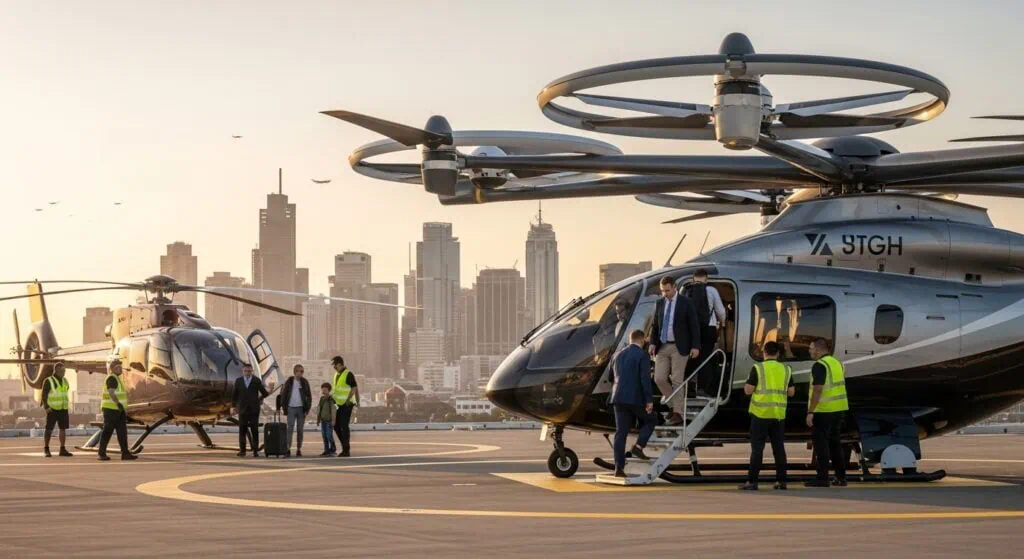
Executive Summary: A Nuanced Economic Picture
The eVTOL vs helicopter cost comparison reveals significant economic challenges for electric aircraft in near-to-medium term operational scenarios, with substantial uncertainty around new technology adoption.
Key Realities:
- Helicopter Operating Costs: $300-600+ per hour (proven, predictable)
- eVTOL Projected Operating Costs: $250-400+ per hour (highly uncertain, dependent on unproven assumptions)
- Purchase Price Difference: eVTOLs currently more expensive ($4-5M+ vs $1-3M for light helicopters)
- Maintenance Costs: eVTOL savings remain theoretical, with DEP complexity potentially increasing maintenance requirements
These projections indicate substantial economic hurdles for eVTOL operations, with actual performance dependent on overcoming battery life limitations, certification timelines, and achieving unprecedented utilization rates.
Disclaimer
This analysis utilizes projected cost data from industry sources including ARK Invest, Morgan Stanley, and manufacturer estimates. Actual prices and operating costs may vary significantly due to production scaling, regulatory changes, technological shifts, and unforeseen operational challenges. The eVTOL industry is at an early stage, and its economic viability depends heavily on advancements in battery technology, infrastructure development, and achieving high utilization rates. This article is intended for informational purposes and does not constitute financial or operational advice.
Acquisition Costs: Purchase Price Analysis
Traditional Helicopter Pricing
The helicopter market offers established pricing based on decades of production experience and proven operational track records. Starting at $500,000 for a base model, the Robinson R44 Raven II light helicopter remains a top choice for private owners and training, while larger commercial aircraft command significantly higher prices.
Light Helicopters:
- Robinson R22: $300,000-500,000
- Robinson R44: $500,000-800,000
- Bell 206: $1.5-2.5 million
Medium Helicopters:
- With advanced avionics and versatility, the Bell 407GXi is priced at approximately $3.1 million
- The Airbus H125 (formerly known as the AS350 B3e), popular in utility operations, this helicopter starts around $3.3 million
Heavy Helicopters:
- Sikorsky S-76: $10-15 million
- Airbus H175: $15-20 million
- AgustaWestland AW139: $12-17 million
eVTOL Acquisition Costs: Current Market Reality vs. Initial Projections
eVTOL manufacturers initially announced ambitious target pricing to accelerate market adoption.
However, real-world early sales figures and production estimates reveal a significant gap between these projections and current market reality, reflecting the high costs of certification, low-volume production, and advanced technology.
Planned/Target Pricing (Manufacturer Projections):
Archer Midnight: ~$1 million (initial target)
Joby S4: ~$1.3 million (production cost target)
Lilium Jet: $3-7 million (depending on configuration)
EHang EH216-S: $1-2 million Current Market Pricing
(Early Sales Estimates):
Archer Midnight: ~$5 million (early sales figures)
Joby S4: ~$4-5 million (estimated)
Lilium Jet: $7-10 million (estimated)
EHang EH216-S: ~$300,000 – $400,000
eVTOL Operating Cost Projections: Potential vs. Current Challenges
Electric aircraft theoretically offer operational savings through simplified propulsion systems, but current real-world data remains limited and actual costs may significantly exceed initial projections.
Industry analysts like ARK Invest estimate traditional helicopter operating costs at approximately $300 per hour (e.g., Robinson R66: $123 for fuel, $89 for maintenance, $94 for overhaul parts).
Projected eVTOL Operating Advantages (Based on Manufacturer Estimates):
- Energy Costs: $20-40 per hour (electricity vs. aviation fuel)
- Maintenance: $50-100 per hour (theoretically fewer moving parts)
- No Oil Changes: Potential elimination of routine fluid maintenance
- Reduced Inspections: Possibly simplified maintenance schedules
Important Considerations & Current Realities:
- Insurance costs may initially be higher due to new technology risk
- Battery replacement represents a significant unplanned expense not reflected in hourly rates
- Actual maintenance costs for DEP systems remain unproven and may exceed projections
- Regulatory requirements may mandate more extensive inspections than anticipated
Based on current market data and manufacturer projections, eVTOL operational costs could potentially be 30%+ lower than helicopters, though these estimates remain speculative until certified aircraft accumulate substantial operational hours. The higher acquisition costs of $4-5 million for eVTOLs versus approximately $1 million for a Robinson R44 also significantly impact total cost of ownership calculations.expected to decrease as manufacturing scales and supply chains mature.
Operating Cost Breakdown
Helicopter Operating Expenses
Traditional helicopter operations face significant cost pressures across multiple expense categories. Operating helicopters is an expensive endeavor, with costs that can astound the unprepared. Kenny Keller’s breakdown shows that the $560.80 per hour figure is born from a complex web of fixed and variable expenses.
Detailed Helicopter Cost Analysis: Robinson Helicopter Company estimates that it costs more than $300 per hour to operate its R66 helicopter, as shown on the left below: ~$89 per hour for periodic maintenance, ~$94 per hour for the overhaul parts kit, and ~$123 per hour for fuel.
Operating Cost Categories:
- Fuel Costs: $120-200+ per hour (depending on aircraft size)
- Maintenance: $80-150 per hour
- Insurance: $50-100 per hour
- Pilot Costs: $75-150 per hour
- Hangar/Storage: $20-50 per hour allocated
- Landing Fees: $10-30 per hour average
The average operating cost for a Bell 206 is $350-$400 per hour which includes fuel, oil, engine maintenance reserve and rotor maintenance reserve, representing typical costs for popular commercial helicopter models.
eVTOL Operating Cost Projections: Potential vs. Current Uncertainties
Electric aircraft theoretically offer operational savings through simplified propulsion systems, but these projections remain highly speculative until certified aircraft accumulate substantial operational hours. Current estimates face significant uncertainty regarding maintenance complexity, battery longevity, and regulatory requirements.
Projected Cost Advantages (Based on Manufacturer Estimates):
- Energy Costs: $20-40 per hour (electricity vs. aviation fuel)
- Maintenance: $50-100 per hour (theoretically fewer moving parts)
- Eliminated Costs: No oil changes or routine fluid maintenance
- Inspection Intervals: Potentially simplified maintenance schedules
Important Unproven Assumptions & Challenges:
- ✗ Battery Replacement: Significant unplanned expense not reflected in hourly rates
- ✗ DEP Maintenance: Complex multi-rotor systems may require more maintenance than projected
- ✗ Insurance Costs: Likely higher initially due to new technology risk profile
- ✗ Regulatory Requirements: Unknown inspection mandates may increase maintenance costs
- ✗ Real-world Utilization: Actual performance in commercial operations remains unverified
*While manufacturer projections suggest potential 30%+ cost reductions compared to traditional helicopters, these estimates depend on achieving unprecedented reliability rates and maintenance efficiencies that have not yet been demonstrated in commercial aviation operations.*nks to the lower cost of electricity compared to fuel oil and batteries/electric motors relative to their internal combustion engine counterparts.
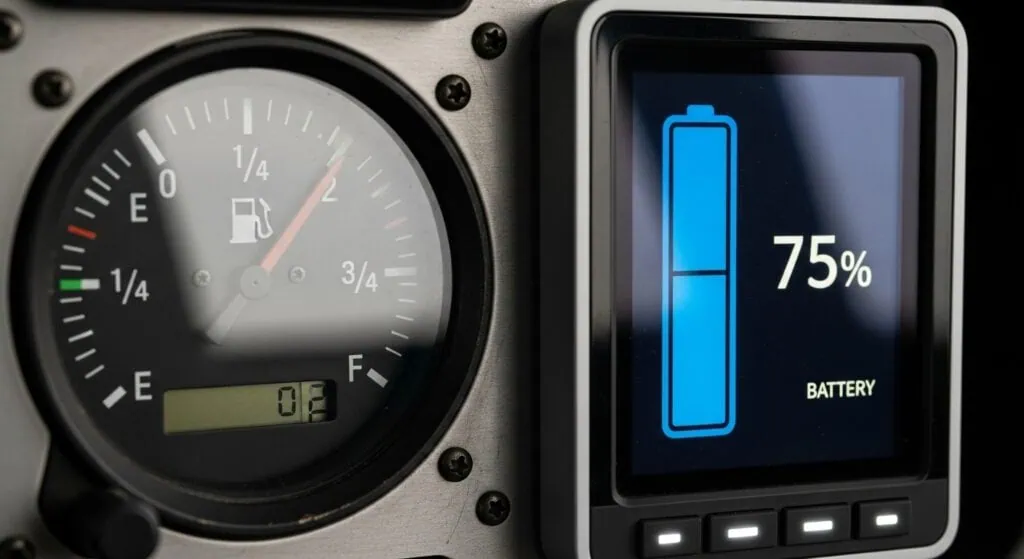
Fuel and Energy Cost Comparison
Helicopter Fuel Consumption
Aviation fuel represents one of the largest operational expenses for helicopter operators. For instance, the Bell 206 JetRanger burns between 26 and 30 US gallons (98 to 114 liters) an hour depending on configuration. If the average JetA fuel price in your area is $6.97, then your fuel cost per hour is $181.22 to $209.10.
Typical Fuel Consumption:
- Light Helicopters: 20-40 gallons/hour
- Medium Helicopters: 40-80 gallons/hour
- Heavy Helicopters: 80-150+ gallons/hour
With Jet A fuel averaging $6-8 per gallon, fuel costs alone can range from $120-1,200+ per hour depending on aircraft size and mission profile.
eVTOL Energy Efficiency: Advantages and Critical Challenges
Electric propulsion offers potential cost advantages in cruise flight through higher energy efficiency and lower electricity costs compared to jet fuel. However, these benefits must be balanced against significantly higher energy demands during vertical takeoff, landing, and hovering phases.
Theoretical Efficiency Advantages:
- Electricity vs. Fuel Cost: $0.10-0.30 per kWh vs. $6-8 per gallon jet fuel
- Motor Efficiency: Electric motors ~90% efficient vs. ~30% for turbines
- Regenerative Capabilities: Some energy recovery possible during descent
- Grid Integration: Renewable energy sourcing potential
Critical Efficiency Challenges (Often Overlooked):
- Hovering Penalty: eVTOLs require 4-8x more power to hover than traditional helicopters of comparable size due to less efficient rotor design and higher disk loading
- Short-Route Impact: On urban missions with frequent takeoff/landing cycles, the energy-intensive vertical flight phases can eliminate cruise efficiency advantages
- Battery Weight Impact: The “permanent ballast” of batteries reduces payload capacity and requires additional energy to lift
- Real-World Efficiency: Actual energy consumption depends on mission profiles, weather conditions, and operational procedures still being defined
Conclusion: While eVTOLs show promise for efficient cruise flight, their overall energy efficiency is highly mission-dependent. For longer routes with minimal hovering, they may achieve significant cost advantages. For short urban hops with frequent vertical transitions, their energy consumption may actually exceed that of traditional helicopters.ser to $200, a savings that adds up fast for high-frequency taxi routes.
Maintenance Cost Analysis
Helicopter Maintenance Requirements
Traditional helicopters require extensive maintenance due to complex mechanical systems with thousands of moving parts. Depending on the age and condition of the aircraft, these costs typically range between $15-$30 per hour for basic maintenance reserves.
Maintenance Schedule Complexity:
- 100-hour inspections: $2,000-5,000
- Annual inspections: $15,000-50,000
- Major overhauls: $100,000-500,000+ (every 1,000-3,000 hours)
- Component replacements: Ongoing expensive parts
Helicopters are mechanical beasts every 100 hours, they need inspections; every 1,000, a major overhaul. That’s time and money bleeding out.
Interested in traditional helicopter charters? See our Switzerland Helicopter Charter Price Guide.
eVTOL Maintenance: Theoretical Advantages vs. Practical Challenges
While electric propulsion eliminates some traditional maintenance aspects, the distributed nature of eVTOL systems introduces new complexities that may offset these theoretical benefits. Actual maintenance requirements remain largely unproven in commercial operation.
Theoretical Advantages (Based on Manufacturer Claims):
- Elimination of oil changes and fluid maintenance
- Reduced mechanical complexity in propulsion systems
- Potential for predictive maintenance through advanced sensors
- Modular component replacement possibilities
- Possibly extended inspection intervals
Significant Practical Challenges & Considerations:
- DEP Complexity: Distributed Electric Propulsion systems contain more flight-critical rotating parts (multiple motors, propellers, controllers) than traditional helicopters, each requiring inspection and maintenance
- Vibration & Fatigue: Components experience significant oscillatory loads, potentially leading to shorter service lives and more frequent replacements
- Battery Maintenance: Regular capacity testing and thermal management system maintenance add new maintenance categories
- Battery Replacement: Aviation-grade battery packs represent a major recurring expense (potentially $100,000+ per replacement) not typically encountered in conventional aircraft
- Regulatory Uncertainty: Certification requirements may mandate more frequent inspections and component replacements than manufacturers anticipate
- Specialized Training: Technicians require new skills for high-voltage systems and complex electronics
While consultancies like Bain & Company suggest maintenance costs could be “much lower,” these projections remain speculative. The reality is that eVTOL maintenance profiles are fundamentally different rather than simply better, trading traditional mechanical complexity for new electrical and systems complexity.
The maintenance cost advantage will only be proven when these aircraft accumulate substantial flight hours in commercial service, which will take several years of operational experience.
Pilot and Labor Costs
Traditional Helicopter Operations
Helicopter pilots command significant salaries due to specialized training requirements and operational complexity. Professional helicopter pilots typically earn $75,000-150,000+ annually, depending on experience and operation type.
Pilot Cost Factors:
- Training Costs: $80,000-200,000 for commercial certification
- Recurrent Training: $10,000-25,000 annually
- Insurance Requirements: Higher premiums for pilot coverage
- Duty Time Limitations: Regulatory constraints on flight hours
eVTOL Pilot Requirements and Automation Outlook
Initial Operational Phase: Certified Pilots Required
Initial eVTOL operations will require conventionally certified pilots with type ratings specific to each aircraft. While manufacturers suggest training might be simplified compared to traditional helicopters, the actual requirements will be determined by aviation authorities (FAA, EASA) and will likely include extensive training on new systems and failure modes.
Current Reality:
- Pilot salaries are expected to be comparable to helicopter pilots ($80,000-150,000+ annually)
- Training costs will remain significant until standardized programs emerge
- Regulatory frameworks currently require two-pilot operations for commercial air transport
Autonomous Operations: Distant Reality Despite Optimistic Projections
The transition to fully autonomous operations faces substantial technical and regulatory hurdles that will likely take decades rather than years to resolve.
Major Barriers to Autonomy:
- Regulatory Certification: No existing framework for certifying autonomous passenger aircraft in dense urban environments
- Technical Challenges: Unresolved issues in detect-and-avoid systems, decision-making in complex scenarios, and cybersecurity
- Public Acceptance: Significant passenger skepticism about pilotless flight
- Infrastructure Requirements: Need for advanced UTM (Urban Air Mobility) systems not yet deployed
*While studies like the ScienceDirect analysis project attractive ROI for autonomous operations, these remain theoretical exercises based on optimistic assumptions. Most industry experts believe meaningful autonomy beyond single-pilot operations remains 15-20 years away for passenger transport.*
Evolutionary Path:
- Two-pilot operations (initial phase)
- Single-pilot operations (after sufficient operational experience)
- Reduced crew operations (remote monitoring)
- Fully autonomous (distant future after regulatory and technical hurdles cleared)
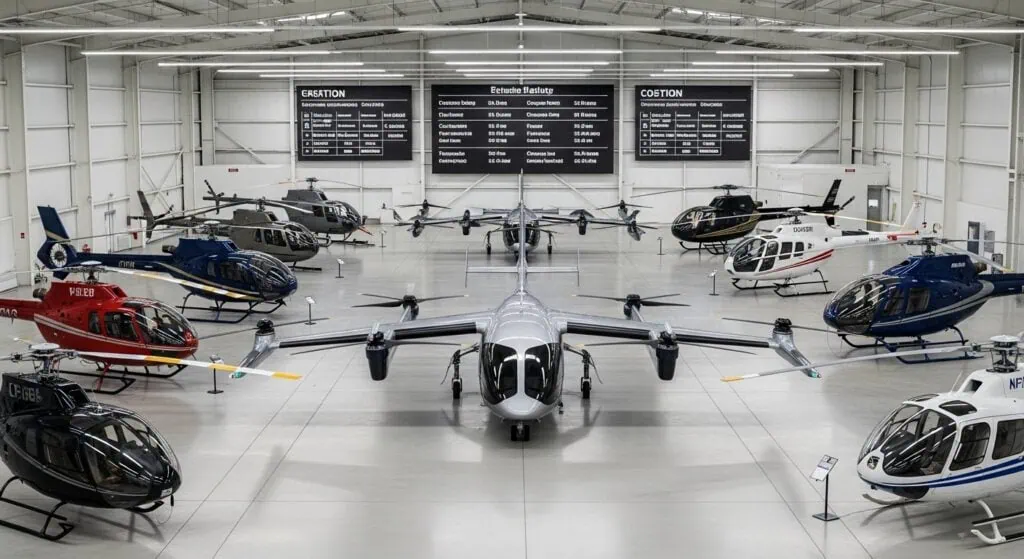
Insurance and Risk Assessment
Helicopter Insurance Costs
Traditional helicopters benefit from decades of operational data and established insurance markets. Depending on whether you just carry Liability coverage or Full Flight Hull Coverage, this cost will vary, but it typically runs between $2,000 for liability only or $11,480 including $400,000 in hull coverage.
Insurance Cost Factors:
- Hull value and coverage limits
- Pilot experience and training
- Operational environment (urban vs. rural)
- Mission profile and risk exposure
- Safety record and incident history
eVTOL Insurance Considerations: Significant Cost Challenges Ahead
eVTOL insurance markets face substantial uncertainty as these novel aircraft approach certification. Unlike established helicopter insurance with decades of claims data, eVTOLs present unique risks that will likely result in significantly higher premiums initially – potentially 2-3 times higher than equivalent helicopters.
Key Risk Factors Driving Insurance Costs:
▲ Technology Novelty: Untried systems with limited operational history
▲ Battery Risks: Thermal runaway potential and high replacement costs
▲ Regulatory Uncertainty: Evolving certification requirements across jurisdictions
▲ Liability Concentration: High passenger capacity per aircraft increases exposure
▲ Infrastructure Dependence: New vertiport operations introduce ground risks
▲ Cyber Vulnerability: Digital flight systems create hacking concerns
Initial Cost Projections:
- Early insurance premiums estimated at 15-20% of hull value annually versus 3-5% for helicopters
- Potential liability limits requiring $500M+ in coverage for commercial operations
- Higher deductibles for battery-related claims
Long-Term Outlook:
While costs may decrease with operational experience, the fundamental differences in eVTOL technology suggest insurance will remain a significant operational cost factor rather than becoming a competitive advantage. The lack of historical data and new risk categories mean premium reductions will occur gradually over 10-15 years rather than immediately.
*Insurance industry analysts project that eVTOL operators should budget for insurance costs 2-3 times higher than equivalent helicopter operations during the first decade of service, even after accounting for potential safety advantages of electric propulsion systems.*lop.
Total Cost of Ownership Analysis
10-Year TCO Comparison: Revised Projections Based on Current Market Data
*This comprehensive total cost of ownership analysis has been substantially revised to reflect current eVTOL market prices ($4-5M) rather than optimistic manufacturer projections. The results show a dramatically different economic outlook.*
Helicopter Baseline (Robinson R66 Equivalent):
- Aircraft Purchase: $1,000,000
- Operating Costs (10,000 hours): $3,000,000 ($300/hour)
- Major Overhauls: $400,000
- Total 10-Year TCO: ~$4,400,000
eVTOL Projection (Archer Midnight at $5M):
- Aircraft Purchase: $5,000,000
- Operating Costs (10,000 hours): $2,500,000 ($250/hour – optimistic projection)
- Battery Replacements (2x full replacements): $1,000,000+
- Total 10-Year TCO: ~$8,500,000+
Key Economic Realities:
- Higher Capital Costs: eVTOL purchase prices are 4-5x higher than initial projections
- Battery Replacement Impact: Adds $1M+ in unplanned costs over 10 years
- Operating Cost Uncertainty: The projected $250/hour remains unverified
- Utilization Dependency: Economics only improve at very high utilization rates (1,500+ hours/year)
Revised Break-Even Analysis:
- High-Utilization Scenarios (2,000+ hours/year): Break-even in 7-10 years (vs. 2-3 in previous analysis)
- Medium-Utilization (1,000 hours/year): No economic advantage over helicopters
- Low-Utilization (<500 hours/year): Significant economic disadvantage
*The original conclusion of 40-50% cost savings has been replaced with a more nuanced understanding: eVTOLs may eventually achieve cost parity in high-utilization urban air mobility applications, but face substantial economic challenges in the near to medium term.*reveals significant long-term advantages for eVTOL operations, despite potential higher initial costs and risks.
“Economic Viability: The Long Path to Profitability”
A traditional break-even analysis is not currently possible due to the high degree of uncertainty surrounding eVTOL operational costs, particularly maintenance, battery replacement, and insurance expenses. These unproven variables make precise calculations speculative.
Instead, the economic discussion must focus on the conditions required for future viability:
- Significant Cost Reduction: eVTOL acquisition prices must fall dramatically from current levels (~$5M) to approach original manufacturer targets (~$1.5M).
- Battery Technology Breakthroughs: Energy density must increase while costs and degradation rates decrease substantially to make battery replacement a manageable expense.
- Validation of Operational Savings: The promised reductions in maintenance and energy costs must be proven in rigorous commercial service over thousands of flight hours.
- Very High Utilization Rates: Achieving profitability will likely require exceptionally high annual utilization (1,500+ hours), which presents its own operational and logistical challenges.
Until these conditions are met, helicopters will remain the economically rational choice for most operators due to their predictable operating costs and proven reliability. The path to eVTOL economic viability is measured in decades, not years.
Passenger Cost Implications
Helicopter Charter Rates
Traditional helicopter charter rates reflect operational cost structures and market positioning. On average, you can expect the hourly rate to fall somewhere between $1,200 and $5,000, but this is just a starting point.
Typical Charter Pricing:
- Light helicopters: $1,200-2,500/hour
- Medium helicopters: $2,500-5,000/hour
- Heavy helicopters: $5,000-10,000+/hour
eVTOL Passenger Pricing: From Premium Service to Mass Market Goal
The journey towards affordable eVTOL passenger pricing is far more complex and elongated than initial manufacturer projections suggested. Critical feedback from aviation experts has rightly highlighted that early estimates failed to account for real-world acquisition and operational costs. This analysis integrates those valid concerns.
Revised Near-Term Reality (2025-2035): Premium Pricing Phase
Based on current eVTOL market prices of ~$5 million per aircraft and unproven operational costs, near-term pricing will not compete with ground transport. Instead, it will mirror existing premium helicopter services:
- Target Price Point: ~$10-15 per passenger mile (e.g., $150-$225 for a 15-mile urban flight)
- Comparative Benchmark: This aligns with Blade’s helicopter shuttle from Manhattan to JFK, which costs $195 per seat.
- Target Market: Affluent business travelers and luxury experiences where time savings justify a premium, not mass-market commuting.
The Long-Term Vision vs. Practical Hurdles
The industry’s long-term goal remains reducing fares to $2-3 per passenger mile to achieve mass adoption. However, this is not a forecast but a vision that depends on overcoming massive hurdles:
- ✓ Scaling Production: Reducing aircraft acquisition costs from ~$5M towards initial $1.5M targets.
- ❌ Proving Maintenance Claims: Demonstrating that savings from simpler propulsion offset higher costs for battery replacements and DEP system maintenance.
- ❌ Achieving High Utilization: Operating aircraft at very high rates (>2,000 hours/year) to amortize costs, a significant operational challenge.
- ❌ Regulatory Approval for Autonomy: Removing the pilot cost burden, which is a distant prospect.
Conclusion: A Decade of Premium Service
Expert criticism has been justified: eVTOLs will begin as a premium service with premium pricing. The path to affordability is a decade-long endeavor contingent on solving core economic and technological challenges. The timeline for truly competitive pricing with ground transportation remains highly uncertain.
Infrastructure Cost Considerations
Helicopter Infrastructure
Traditional helicopters utilize existing airport and heliport infrastructure, benefiting from decades of development and established operational procedures.
Infrastructure Advantages:
- Existing heliport networks
- Established fuel supply chains
- Proven ground support equipment
- Trained maintenance personnel
- Regulatory framework maturity
Infrastructure Costs:
- Landing fees: $50-500 per operation
- Fuel infrastructure: Established supply chains
- Maintenance facilities: Widely available
eVTOL Infrastructure Requirements: The Multi-Billion Dollar Challenge
eVTOL operations require entirely new infrastructure ecosystems, representing one of the most significant financial and logistical barriers to scaling urban air mobility. While vertiports enable optimized operations, their development costs and regulatory complexities present formidable challenges.
Vertiport Development Realities:
- Construction Costs: $5-50 million per facility, with urban locations at the highest end due to land acquisition and zoning complexities
- Charging Infrastructure: $500,000-2 million per location for rapid-charging systems capable of 15-30 minute turnarounds
- Air Traffic Management: Requires new UTM (Urban Air Mobility) systems with estimated development costs of $500 million-$1 billion globally
- Certification Costs: Regulatory approval processes add 20-30% to project timelines and budgets
- Noise Mitigation: Advanced acoustic engineering required to meet urban noise regulations, adding 15-25% to construction costs
Significant Implementation Challenges:
- ✗ Urban Zoning Hurdles: Most cities lack zoning for vertiports, requiring lengthy approval processes
- ✗ Public Opposition: Community resistance to noise and safety concerns in dense urban areas
- ✗ Grid Upgrades: Electrical infrastructure requires substantial upgrades to support high-power charging
- ✗ Regulatory Uncertainty: Evolving certification standards create investment risk
- ✗ High Initial Investment: Requires public-private partnerships with uncertain ROI timelines
Phased Implementation Strategy:
- Initial Phase (2025-2030): Retrofit existing helipads and airports with charging capabilities
- Expansion Phase (2030-2035): Develop dedicated vertiports in strategic urban corridors
- Maturation Phase (2035+): Integrated network of vertiports with advanced UTM integration
Investment Requirements:
Industry analysts estimate a $20-50 billion global investment in eVTOL infrastructure is needed through 2040 to support meaningful scale. This investment must precede proven demand, creating significant financial risk for early investors.
The infrastructure challenge represents a classic “chicken and egg” problem: significant investment is required before operational scale can be achieved, but scale is needed to justify the investment. This dynamic suggests that infrastructure development will proceed much more slowly than aircraft certification. barrier but promises long-term operational advantages as networks develop.
Risk Factors and Considerations
Helicopter Risk Profile
Traditional helicopters present known risk factors based on extensive operational history:
Technical Risks:
- Mechanical complexity and failure modes
- Weather operational limitations
- Pilot skill requirements
- Maintenance cost escalation
Financial Risks:
- Fuel price volatility
- Insurance cost increases
- Regulatory changes
- Market competition
eVTOL Risk Assessment: A Candid Look at Operational Challenges
eVTOL operations introduce fundamentally new risk categories that differ significantly from traditional aviation. While potentially reducing some traditional mechanical risks, they create novel challenges that must be rigorously addressed before safe, economical commercial scaling can occur.
Technology & Operational Risks:
- Battery Performance & Safety: Risk of thermal runaway, rapid degradation (especially with fast-charging cycles), and limited cycle life (potentially as low as 1,000 cycles at 5C charging rates). Replacement costs are a major financial risk, potentially exceeding $100,000 per pack every few years.
- Certification Uncertainty: The path to full type certification for novel aircraft configurations (especially tilt-rotor) remains long, complex, and untested, creating timeline and budget risks.
- Distributed Propulsion Complexity: DEP systems have more flight-critical components (motors, inverters, propellers) than traditional helicopters, increasing potential points of failure and maintenance complexity, contrary to common perception.
- Autonomous System Reliability: Detect-and-avoid technology, decision-making in complex urban environments, and cybersecurity are unproven at the required safety levels for passenger transport.
Market & Regulatory Risks:
- Public Acceptance: Noise perceptions (even if quieter, the sound character is different), safety concerns, and “not in my backyard” (NIMBY) opposition to vertiports pose significant adoption barriers.
- Regulatory Pace: The development of a robust regulatory framework for UAM (Urban Air Mobility) is slow and may lag behind technology, delaying commercial operations.
- Economic Viability: As critically noted by industry experts, the current high acquisition costs (~$5M per aircraft) and unproven operational cost models create a fundamental risk to the business case.
- Infrastructure Dependence: Operations cannot begin without massive, upfront investment in vertiports and charging networks, creating a “chicken and egg” problem.
Mitigation Outlook:
These risks are not necessarily insurmountable but require transparent acknowledgment. Mitigation depends on:
- Relentless technological refinement in battery chemistry and system redundancy.
- Close collaboration with regulators (FAA, EASA) to build certification precedents.
- Building public trust through demonstrably safe operations and community engagement.
- Achieving manufacturing scale to reduce costs and improve reliability.
The successful management of these interconnected risks will determine the pace and scale of eVTOL adoption more than technological achievement alone.
Regional Market Variations for eVTOL Adoption
The global eVTOL market is developing along distinct regional pathways, each with unique drivers, leaders, and challenges. Success depends on navigating local regulatory, infrastructural, and economic landscapes.
1. North America: The Cautious Innovator
- Status: Global R&D and Investment Leader (Holds ~40% market share). Home to key players like Joby, Archer, and Beta.
- Strength: Massive private investment, strong tech ecosystem, and a methodical (if slow) FAA regulatory process setting global safety benchmarks.
- Challenge: Extremely high regulatory and certification hurdles. Slow vertiport infrastructure development due to cost and zoning issues. Public acceptance is a significant barrier.
- Outlook: Will lead on certification standards but may see delayed commercial scaling compared to Asia. Initial applications are airport shuttles and cargo.
2. Europe: The Regulatory and Sustainability Pioneer
- Status: Regulatory and Environmental Leader. Driven by strong EU institutions and sustainability mandates.
- Strength: EASA is developing a robust regulatory framework. Strong government support for green technology and urban integration. Key players include Lilium and Volocopter.
- Challenge: Fragmented market with diverse national rules. High operational costs and complex airspace integration.
- Outlook: Will be a leader in safety and environmental standards. Progress will be steady but slower than in Asia, focused on inter-city connections.
3. Asia: The Rapid Deployment Powerhouse
- Status: Manufacturing and Deployment Leader, led by China. Characterized by rapid execution and government-backed scaling.
- Strength: Unmatched government support and funding. Ability to quickly build infrastructure. EHang has already achieved world-first type certifications for passenger eVTOLs in China.
- Challenge: Vast economic disparities between leading and developing nations. Data transparency and intellectual property concerns can deter western partners.
- Outlook: Will likely see the fastest and largest-scale deployment of eVTOL services, primarily for urban mobility and tourism, but may set different safety and privacy standards.
Global Conclusion: There will be no single “global market” for eVTOLs. North America will innovate, Europe will regulate, and Asia will deploy. Each region’s distinct approach will shape the pace and character of the urban air mobility revolution within its borders.
If you’re considering investing in eVTOL companies, read our Joby vs Archer stock analysis.
Future Cost Projections
Technology Learning Curves
Both helicopter and eVTOL costs will evolve through different trajectories:
Helicopter Cost Trends:
- Mature technology with incremental improvements
- Fuel efficiency gains limited by physics
- Manufacturing costs stable
- Maintenance costs increasing with complexity
eVTOL Cost Evolution:
- Rapid cost reduction through production scaling
- Battery technology improvements
- Autonomous systems development
- Manufacturing automation adoption
2030 Cost Projections: A Reality Check
While industry projections often show significant cost advantages for eVTOLs by 2030, achieving these reductions requires overcoming substantial challenges that are frequently underestimated.
Revised 2030 Outlook Based on Current Challenges:
- eVTOL Operating Costs: $300-400/hour (Likely similar to helicopters initially). Significant savings are contingent on proving unverified maintenance models and resolving battery longevity issues.
- Battery Costs: 20-30% reduction possible, but not 50-70%. Aviation-grade battery requirements (safety, power density) limit cost reduction potential compared to automotive batteries.
- Autonomous Operations: No meaningful pilot cost elimination expected by 2030. Regulatory approval for unmanned passenger operations will take significantly longer.
- Infrastructure Costs: Per-operation costs will remain high due to low initial utilization rates and expensive vertiport investments.
Key Dependency: These projections assume successful certification, production scaling, and resolution of all technical challenges – a highly ambitious scenario for a 6-year timeframe.
The most likely 2030 scenario shows eVTOLs achieving cost parity with helicopters in high-utilization scenarios, but not the dramatic cost advantages often projected. True cost leadership remains a post-2030 possibility.
Navigating an Uncertain but Transformative Future
The economic journey of eVTOLs is proving to be longer and more complex than many early projections suggested. While the potential to revolutionize urban mobility remains, the path to economic viability is now understood to be a marathon, not a sprint.
Challenges: Battery Life, Maintenance, and Energy Costs
While the potential of eVTOLs is compelling, a rigorous analysis must acknowledge the significant technological and economic hurdles that remain. Much of the criticism from established aviation experts centers on these real-world operational challenges, and their insights provide a necessary reality check.
1. The Energy Intensity of Hovering
eVTOLs, by design, require a substantial amount of energy to achieve and maintain vertical lift. Studies and expert analyses indicate that certain eVTOL configurations can require 4-8 times more energy to hover than a traditional helicopter of comparable size. This has a direct impact on:
- Range Limitations: Energy consumed during takeoff and landing reduces the effective range for cruise flight.
- Operational Costs: Higher energy consumption directly translates to higher electricity costs per flight hour, especially on short urban routes where hover time is a larger portion of the total flight.
2. The Maintenance Complexity of Distributed Propulsion
A common perception is that electric aircraft will be mechanically simpler. However, a Distributed Electric Propulsion (DEP) system with multiple rotors and motors introduces its own complexities:
- Increased Number of Critical Parts: A DEP system has many more flight-critical rotating parts (motors, propellers, motor controllers) than a single main rotor system. Each of these components requires regular inspection and maintenance.
- Oscillatory Loads and Fatigue: These components are subject to significant vibrational and oscillatory loads, which can lead to metal fatigue and require more frequent replacement or overhaul than initially projected.
- Weight Constraints: The imperative to minimize weight often means components are not designed for “unlimited life,” further impacting long-term maintenance schedules and costs.
3. The Battery Replacement Challenge
This is perhaps the most significant operational cost variable. Modern aviation-grade batteries are incredibly advanced but come with challenges:
- High Capital Cost: Battery packs represent a huge portion of an eVTOL’s upfront cost.
- Degradation and Replacement: Batteries degrade with each charge cycle. Their energy capacity diminishes over time, eventually requiring replacement to maintain the aircraft’s range and performance specs. Industry estimates suggest battery replacement could be a multi-million dollar expense over the life of the aircraft, potentially exceeding the cost of overhauling a traditional gas turbine engine.
- Logistics and Downtime: The process of safely removing, replacing, and disposing of large, heavy aviation batteries is complex and will require specialized infrastructure, leading to operational downtime.
A Path Forward: Innovation as a Response to Challenges
The industry is acutely aware of these hurdles and is actively developing solutions:
- Modular Battery Systems: Designs that allow for quick swapping of smaller, manageable battery modules could reduce downtime and spread replacement costs over time, rather than requiring a single massive capital outlay.
- Advanced Battery Chemistry: Solid-state and other next-generation batteries promise higher energy density, longer life cycles, and improved safety, which would directly address the range and cost issues.
- Predictive Maintenance and Digital Twins: Using AI and sensor data to predict maintenance needs before a failure occurs can maximize aircraft availability and control costs.
- Automated Inspection Systems: Robotics and automated systems could help streamline the inspection process for multiple rotors, making the maintenance of DEP systems more efficient.
Regulatory and Certification Challenges
Beyond technical and economic hurdles, the most decisive factor for eVTOL deployment remains regulatory approval. Unlike helicopters or conventional aircraft, passenger-carrying eVTOLs represent an entirely new category of aviation. This means manufacturers cannot simply adapt existing certification pathways – they must work with regulators such as the FAA in the United States or EASA in Europe to define new safety, performance, and operational standards.
This process is inherently complex and time-consuming. Even companies with significant resources face multi-year delays as authorities evaluate not only the aircraft itself but also pilot training requirements, air traffic integration, and emergency protocols. Until type certification and operating licenses are granted, no commercial flights with paying passengers can take place. Every year of delay not only slows adoption but also increases financial pressure, as capital remains tied up in assets that cannot yet generate revenue.
In addition, certification is only part of the equation. eVTOL operations will require a supporting regulatory framework for vertiports, ground handling, charging infrastructure, and airspace management in dense urban areas. Public acceptance, noise limits, and environmental impact assessments will further influence how quickly cities allow large-scale eVTOL networks to operate.
In short, while cost per seat mile is often the focal metric, the real bottleneck for eVTOL economics may lie in regulation and certification. Until these hurdles are overcome, even the most promising cost or utilization models remain theoretical.
Strategic Pathways for eVTOLs
The debate around eVTOLs often narrows down to a single metric: cost per seat mile. While this is a useful benchmark, it cannot capture the full picture. Aviation economics have always relied on a broader mix of business models, partnerships, and market dynamics. For eVTOLs to succeed, operators will need to look beyond ticket sales alone and adopt more diversified strategies. Several pathways stand out:
1. Premium and Niche Markets
Early adoption will likely take place in high-value segments where passengers are willing to pay a premium for time savings and exclusivity. Airport transfers, city-to-city connections on congested corridors, or access to luxury destinations are natural entry points. As with the first generation of electric cars, targeting affluent customers is a practical way to scale before costs decrease through mass production.
2. Partnerships and Subsidies
In megacities, eVTOLs could serve as a tool to reduce congestion and improve urban mobility. This creates an incentive for municipalities and transport authorities to provide subsidies or regulatory support. Airlines, airports, and hotel groups may also integrate eVTOL services into their networks as value-added offerings, effectively cross-subsidizing the service to enhance customer experience.
3. Scaling and Utilization
Economics improve significantly with higher utilization rates. A realistic target may be 5–8 flight hours per aircraft per day in strong demand markets. However, projections must remain grounded in operational reality – overpromising could undermine credibility. A useful KPI here could be Daily Active Flights (DAF), which captures the actual intensity of fleet operations more transparently than theoretical cost-per-seat models.
4. Technological Learning Curve
Just as with electric vehicles, the first generation of eVTOLs will be expensive. Over time, scale effects, optimized supply chains, and advances in battery and material technology will drive costs down. The long-term potential lies in structural cost reductions that make eVTOL operations systematically more competitive.
5. Alternative Revenue Models
Not all revenue must come from single-seat ticket sales. Subscription models could give frequent travelers a fixed number of flights per month, while fleets could be utilized for multiple purposes – passenger services during the day, cargo or medical transport at night. In addition, eVTOL operations could serve as marketing and branding platforms for companies seeking to showcase innovation.
6. Tokenization of Assets
Blockchain-based tokenization could open entirely new financing models. By dividing an eVTOL or even an entire fleet into digital tokens, operators can attract a broader pool of investors. These tokens can represent fractional ownership and be traded, thereby increasing liquidity and lowering barriers to entry. While legal and regulatory frameworks remain a challenge, tokenization may fundamentally reshape capital allocation in urban air mobility.
7. Decentralized Autonomous Organizations (DAOs)
Going one step further, DAOs introduce community-driven ownership and governance. Token holders would not only provide capital but also gain voting rights on strategic decisions such as fleet deployment, profit distribution, or route expansion. This structure could democratize access and create a global investor community, with smart contracts ensuring transparency. For a highly regulated sector like aviation, governance and compliance will be complex, but the concept offers a glimpse of how digital-native models could transform the industry.
In summary: eVTOL success cannot be measured by ticket price competitiveness alone. The future will depend on a layered mix of premium markets, partnerships, technological cost reductions, and innovative financing models such as tokenization and DAOs. This multi-dimensional approach is what could turn eVTOLs from a costly experiment into a sustainable pillar of urban mobility.
Conclusion: From Brutal Cost Reality to Strategic Potential
Our initial analysis, which projected a clear economic advantage for eVTOLs, has been fundamentally challenged by expert feedback from the aviation industry. This critique was both justified and essential, as it forced a reassessment based on real-world acquisition costs of around USD 5 million per aircraft. The result is a more sobering picture: high capital expenditure, demanding energy requirements, complex maintenance, and costly battery cycles mean that, for now, helicopters remain the more economical and reliable option for most missions.
However, further input also makes it clear that the future of eVTOLs cannot be judged by cost-per-seat-mile alone. Their value lies in addressing urban challenges where helicopters face limits: noise, emissions, and public acceptance. Success will depend not only on technology and manufacturing scale, but also on regulatory frameworks, potential subsidies in congested megacities, premium positioning in the mobility market, and even new financing models such as tokenization and DAO-based fleet ownership.
In this light, the economic case for eVTOLs is not a foregone conclusion but a strategic bet—one measured over decades rather than years. If the technological, regulatory, and financial pieces align, eVTOLs could evolve from today’s costly prototypes into a defining pillar of sustainable urban mobility.
Taken together, these factors suggest that eVTOLs should be assessed not only against helicopters in today’s cost metrics, but within the broader transformation of urban mobility. Their strategic potential lies in reshaping the rules of the game—not just playing by the old ones.
We extend our sincere thanks to the aviation experts whose rigorous feedback has been instrumental in creating a more nuanced, rigorous, and ultimately more valuable analysis. The conversation between the established industry and new entrants is what will ultimately lead to viable solutions for the future of flight.
















